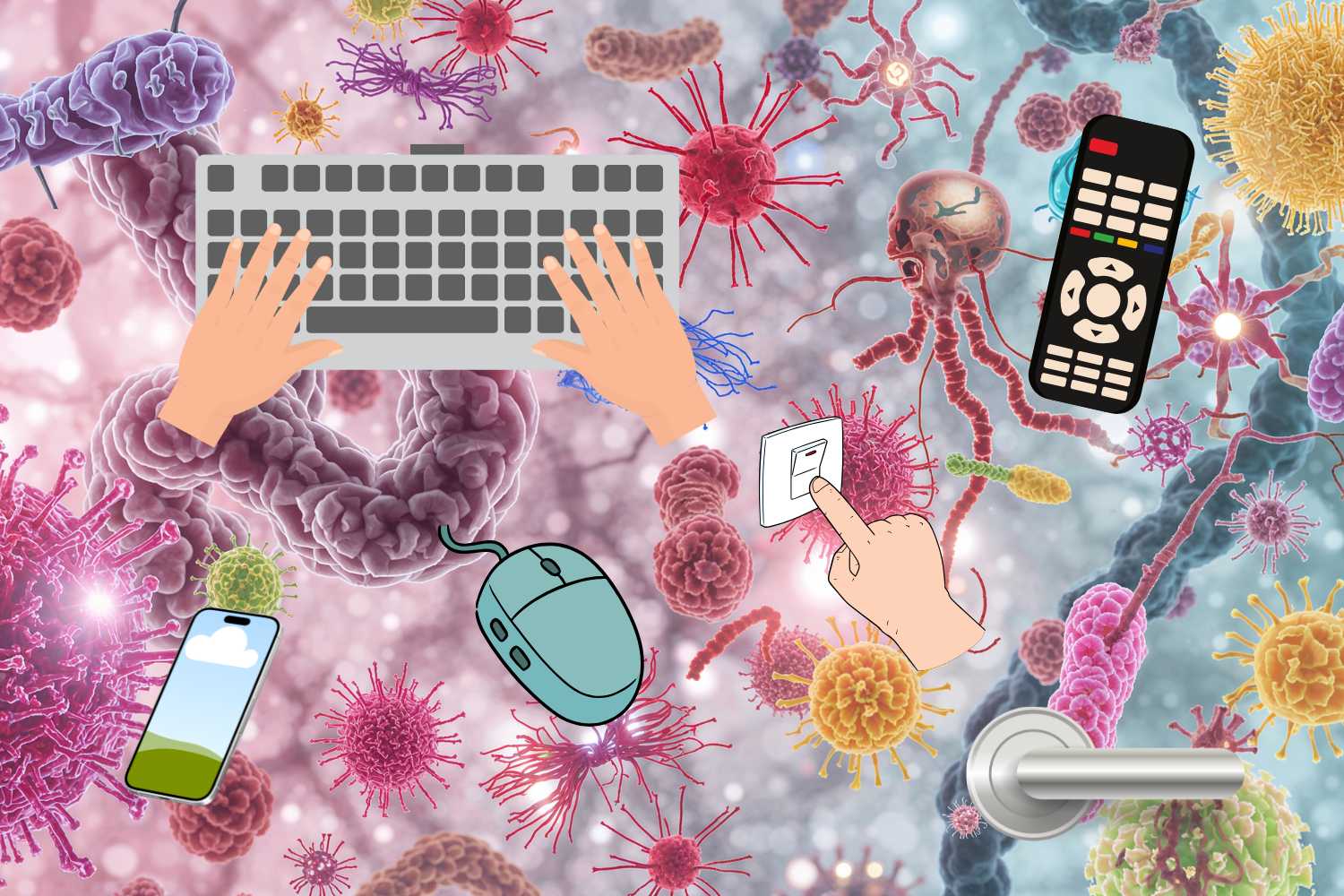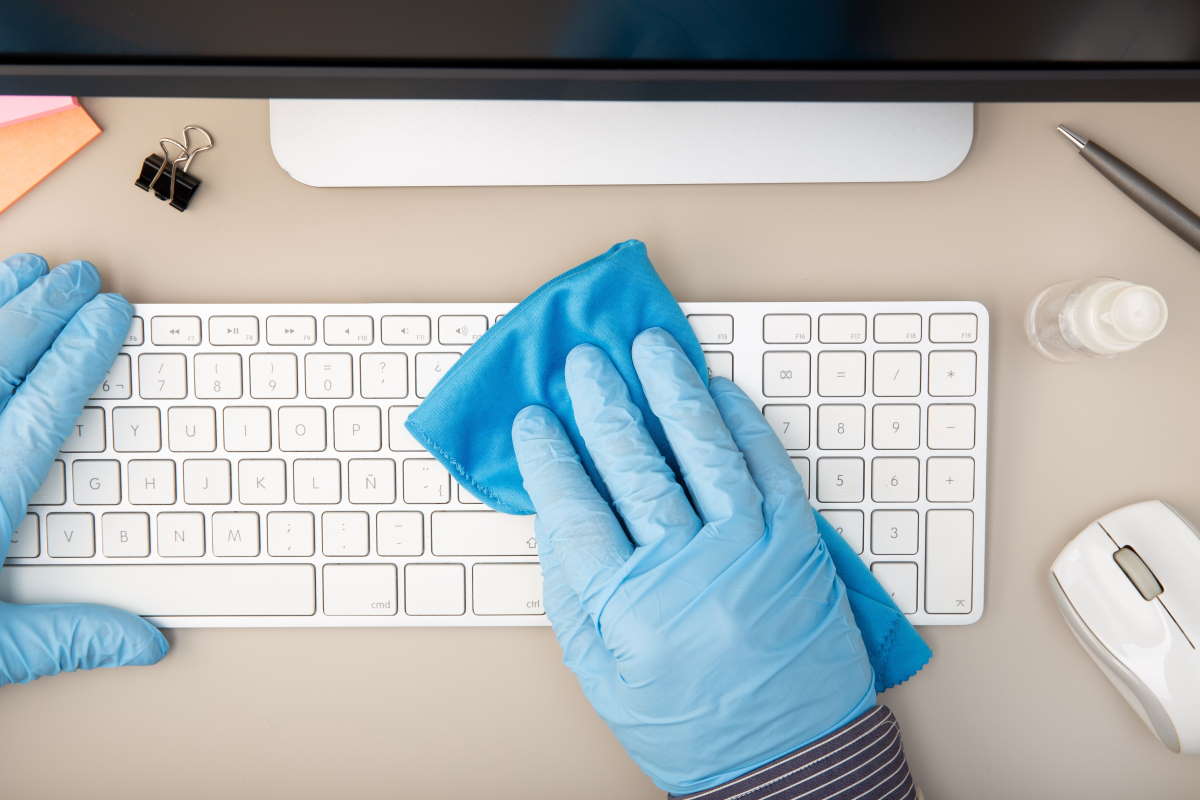Smartphones, keyboards, and remote controls harbor more bacteria than toilet seats. We discover which everyday objects are the most contaminated according to scientific studies and how to protect yourself.

Table of contents
When we think about the dirtiest objects in our homes or offices, the toilet seat is often the first thing that comes to mind, even though reality tells a very different story. Multiple studies have discovered and confirmed that many of the things we touch every day harbor far more bacteria than the bathroom. The reason is simple: we regularly clean the toilet because we associate it with germs, while we neglect objects we handle dozens of times daily.
The smartphone: a bacterial hotspot
Your cell phone is probably the most contaminated object you own. One study found that cell phones carry ten times more bacteria than most toilet seats. Researchers analyzed the devices of high school students and found over 17,000 copies of bacterial genes on their phones.

Serious pathogens like Streptococcus, MRSA, and E. coli have been identified on cell phones. Charles Gerba, professor of microbiology at the University of Arizona, explains that we take our phones everywhere, including the bathroom. When the toilet is flushed, germs spread into the air and land on the device. Taking your cell phone to the bathroom is equivalent to not washing your hands after leaving.
Human skin is naturally covered with microbes that usually don’t cause problems. It’s these bacteria, along with oils from our hands, that transfer to the phone every time we check a message. Moreover, the heat produced by the processor and moisture create perfect conditions for bacterial proliferation.
The computer keyboard: a paradise for germs
Research from the University of Arizona cited by CBS revealed that the average desk harbors 400 times more bacteria than a toilet seat. Keyboards shared among multiple people show particularly high concentrations of dangerous bacteria like E. coli, Staphylococcus aureus, and Streptococcus.

@avictorero/123rf
Some of these germs can survive up to 24 hours on surfaces, and viruses that cause respiratory infections can persist on keyboards and other shared surfaces. Fingers and hands become contaminated with all types of germs throughout the day, and the keyboard becomes a repository for this bacterial load.
One study examined keyboards used in hospital settings and discovered they were colonized by bacteria in 98.5% of cases. The tiny crevices between keys offer refuge to food particles, dust, and bacteria, making cleaning particularly difficult. Additionally, many of us eat at our desks, providing further nourishment to the microorganisms residing there.
The computer mouse: touched but never cleaned
The mouse is another device that’s rarely cleaned but constantly touched. Some experiments have shown that mice can harbor hundreds of bacterial colonies, in some cases with levels double those of a toilet seat. The hand rests on the mouse for hours each day, continuously transferring bacteria from skin to device.

Studies have identified the presence of Staphylococcus aureus and E. coli on computer mice. The problem is aggravated by the fact that we often use the computer while eating, spreading food residue that promotes bacterial growth. In shared environments like offices or libraries, the risk of contamination increases because the device passes from hand to hand.
The remote control, the often forgotten object
Laboratory research discovered that the average remote control carries very high levels of Enterobacter, a type of bacteria found in feces, 15 times higher than a toilet seat. The study also detected moderate levels of yeast and mold, along with Streptococcus.

Each person touches the remote control about 5,475 times per year on average, and a good 25% of people never clean it. Enterobacter can spread diseases and infections, including bloodstream infections and pneumonia. We touch the remote after using the bathroom, while eating, when we’re sick, continuously transferring germs onto its surface.
In hotel rooms and hospitals, where remotes are used by many different people, contamination levels can be even higher. Yet these devices are rarely sanitized between guests.
Door handles and light switches: high-contact surfaces
A study by British supplier Furniture At Work revealed that door handles in offices have 30 times more bacteria than a toilet seat. Researchers used an ATP monitoring system commonly used in hospitals, measuring 648 relative light units on the handle versus only 21 on the toilet seat.

On average, light switches harbor over 200 bacteria per square inch, earning them decidedly high scores in the ever-ungratifying comparison with the toilet seat.

The reason is simple: we touch handles and switches with dirty hands before washing them. These objects are located in high-traffic environments where many people touch them daily. Coughs, unwashed hands, and continuous contact facilitate microbial transfer.
How to protect yourself
The good news is that most bacteria present on these objects aren’t dangerous to healthy people. Only about 0.1% of the microbes we encounter daily are pathogenic, because the immune system promptly eliminates most infections.
The key is regular cleaning. Smartphones should be sanitized with slightly dampened microfiber cloths, avoiding excessive liquids. Keyboards and mice should be cleaned with disinfectant wipes at least once a week. Remote controls should be sanitized monthly, more often if someone at home is sick. As for door handles and switches, a daily wipe with disinfectant products will do just fine.
Above all, washing your hands remains the most effective defense. Never use your smartphone in the bathroom and avoid touching your face after handling common objects. These simple habits drastically reduce the risk of infections, protecting your health without becoming obsessed with germs.
